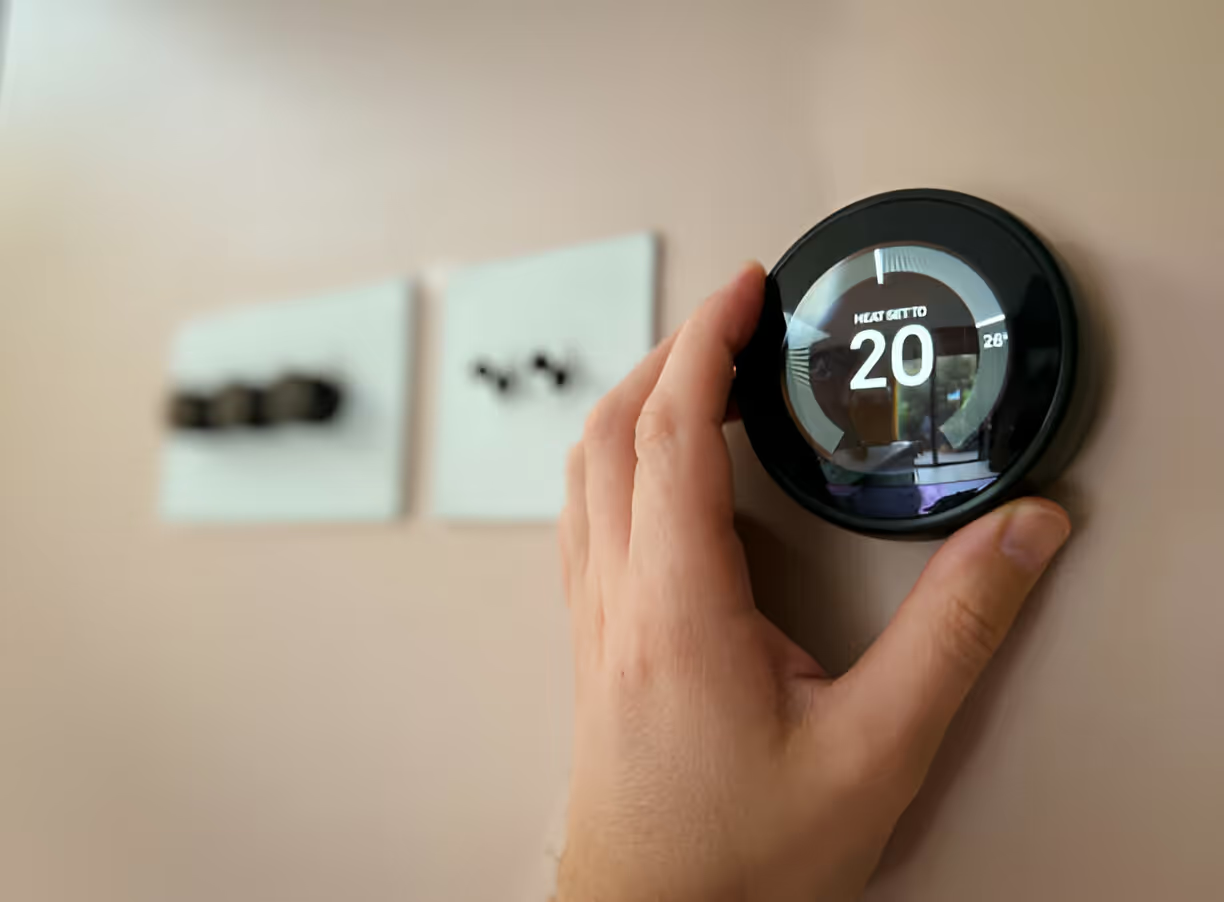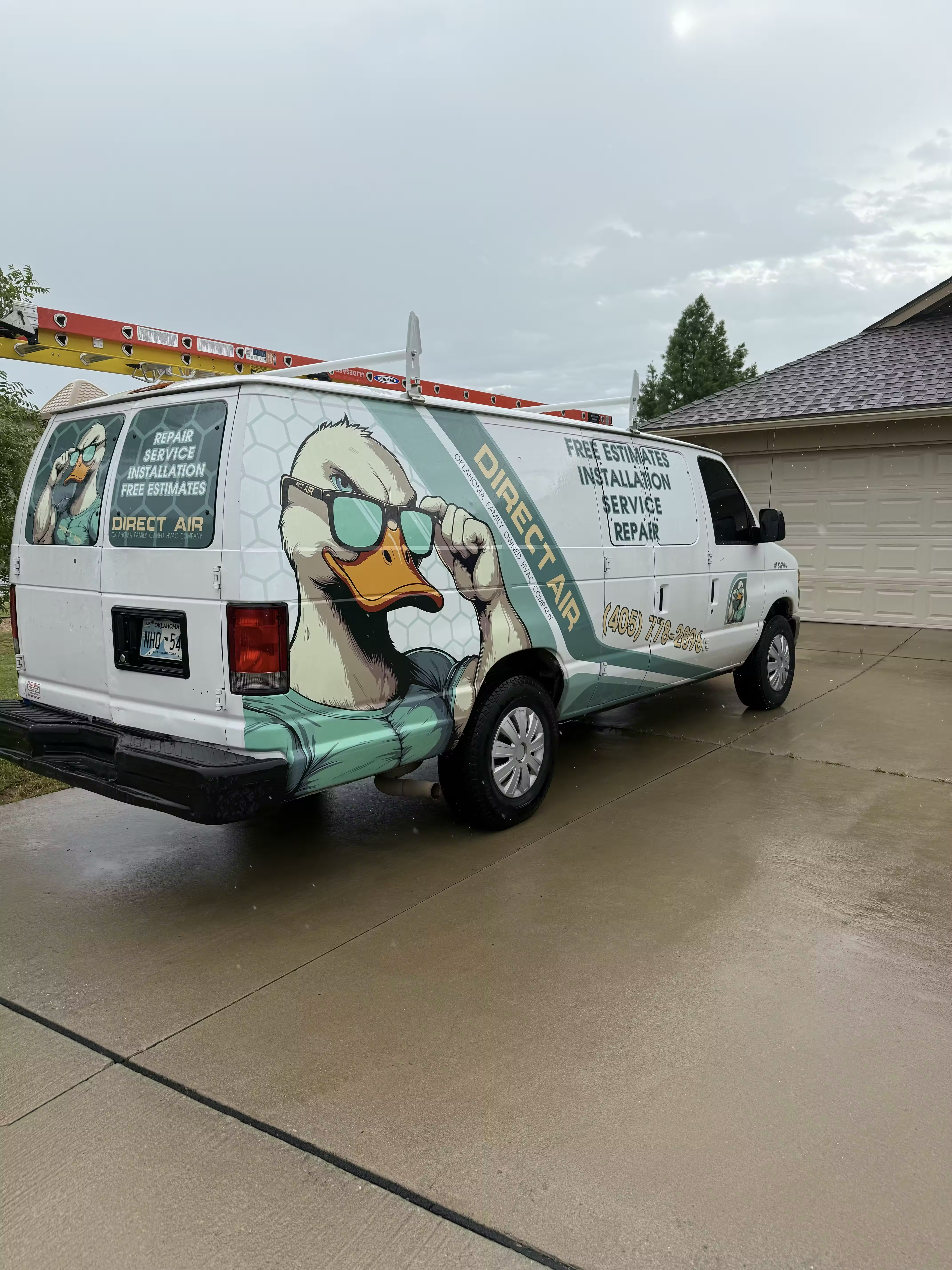Thermostat Replacement Oklahoma City, OK


A faulty thermostat in Oklahoma City, OK, causes discomfort and high energy bills. This page details signs for professional thermostat replacement, like inaccurate readings or system short cycling. We explore various thermostat types—manual, programmable, and smart Wi-Fi—explaining how professional installation ensures optimal HVAC performance, enhanced comfort, and significant energy savings. Learn why expert service is crucial over DIY for system protection and long-term reliability. Discover the lasting benefits of upgrading your home's temperature control.
Professional Thermostat Replacement in Oklahoma City, OK
The thermostat is the command center of your home’s heating and cooling system. It’s a small device with a massive responsibility: regulating your HVAC equipment to maintain a comfortable, consistent indoor environment. When your thermostat begins to fail, it can lead to frustrating temperature swings, inefficient system performance, and surprisingly high energy bills. In Oklahoma City, where weather extremes demand a reliable HVAC system, a fully functional thermostat isn't a luxury—it's a necessity.
Professional thermostat replacement ensures your new device is perfectly matched and calibrated to your specific HVAC system, unlocking optimal performance, comfort, and energy savings.
Signs It's Time for a New Thermostat
An old or failing thermostat often sends clear signals that it’s time for an upgrade. Ignoring these signs can lead to unnecessary strain on your furnace and air conditioner. Look out for these common indicators:
- Inaccurate Temperature Readings: The temperature in your home feels drastically different from the reading on the thermostat display.
- HVAC System Short Cycling: Your furnace or air conditioner turns on and off in rapid, frequent bursts without completing a full cycle.
- System Fails to Respond: Your HVAC system doesn't turn on or off when you adjust the thermostat settings, or there's a significant delay.
- Constant Adjustments Needed: You find yourself constantly fiddling with the thermostat to maintain a comfortable temperature.
- Unexplained Rise in Energy Bills: If your utility costs have spiked without a change in usage habits, a faulty thermostat could be forcing your system to work overtime.
- Age and Outdated Technology: Most thermostats have a lifespan of about 10 years. If yours is older, especially if it’s a non-digital mercury model, replacement is a proactive step toward better efficiency.
- Physical Damage or No Power: The display is blank, the device is unresponsive, or you see visible signs of damage or frayed wiring.
Choosing the Right Thermostat for Your Home
Upgrading your thermostat opens the door to enhanced control and significant energy savings. There are several types to consider, each offering distinct advantages.
- Manual Thermostats: These are the most basic models, featuring a simple dial or switch to set the temperature. While straightforward, they lack the scheduling features that contribute to energy efficiency and require constant manual adjustment.
- Programmable Thermostats: A significant step up, programmable thermostats allow you to create a heating and cooling schedule based on your daily routine. You can set different temperatures for when you're home, away, or asleep, preventing your system from running unnecessarily and reducing energy waste.
- Smart/Wi-Fi Thermostats: The most advanced option, smart thermostats offer unparalleled convenience and efficiency. They connect to your home’s Wi-Fi, allowing you to control your HVAC system from anywhere using a smartphone, tablet, or computer. Key features often include remote access, learning algorithms that adapt to your preferences, detailed energy usage reports, and seamless integration with smart home ecosystems like Amazon Alexa and Google Assistant.
The Professional Thermostat Replacement Process
A professional installation is more than just swapping out a device; it’s a meticulous process that guarantees safety, compatibility, and peak performance. Our technicians follow a precise procedure to ensure your new thermostat works flawlessly with your HVAC system. This typically involves a thorough assessment of your existing setup, safe removal of the old unit, careful installation and wiring of the new thermostat, and complete system calibration and testing to confirm accurate temperature reading and proper communication with your furnace and air conditioner. Finally, our expert will provide a clear walkthrough of your new thermostat’s features, ensuring you know how to maximize its benefits.
DIY vs. Professional Installation: A Critical Decision
While replacing a thermostat may seem like a simple DIY project, it involves complexities that can lead to significant problems if handled incorrectly. Your HVAC system is a sophisticated piece of equipment, and the thermostat is its delicate brain.
The risks of a DIY installation are considerable. Improper wiring can not only cause the thermostat to malfunction but can also send incorrect signals to your HVAC system's sensitive control board, potentially causing costly damage. There is also a risk of electrical shock if safety protocols are not followed. Furthermore, a DIY installation may void the warranty on your HVAC equipment.
Opting for a professional technician eliminates these risks. A trained expert has the knowledge to handle the wiring safely, ensure the new thermostat is fully compatible with your specific system, and calibrate it for optimal efficiency. This guarantees that your investment in a new thermostat translates into real, long-term energy savings and reliable comfort, all while preserving your system's warranty.
The Lasting Benefits of an Upgraded Thermostat
Investing in a new, professionally installed thermostat provides numerous advantages that you'll notice immediately and for years to come.
- Enhanced Comfort: A modern thermostat provides precise temperature control, eliminating hot and cold spots and maintaining a consistent, comfortable environment throughout your home.
- Significant Energy Savings: By running your HVAC system more efficiently, a programmable or smart thermostat can substantially lower your monthly heating and cooling costs.
- Extended HVAC System Lifespan: By preventing issues like short cycling, a properly calibrated thermostat reduces unnecessary wear and tear on your furnace and air conditioner, helping to extend their operational life.
- Unmatched Convenience: Smart thermostats offer the ultimate convenience, allowing you to adjust your home’s temperature from anywhere, whether you're on the couch or on vacation.
Frequently Asked Questions About Thermostat Replacement
How long does a thermostat typically last?
The average lifespan for a modern digital thermostat is about 10 years. Older mechanical models may have a shorter effective life. If your thermostat is approaching this age, it’s wise to consider a replacement to benefit from new technology.
Can a smart thermostat really save me money?
Yes. By learning your habits, allowing for remote adjustments, and providing detailed energy reports, a smart thermostat helps you eliminate wasted energy. Many homeowners see a significant reduction in their heating and cooling bills after upgrading.
Should I repair or replace my thermostat?
If the issue is simple, like dead batteries, a repair is sufficient. However, for problems like inaccurate readings, constant cycling, or unresponsiveness, replacement is often the more cost-effective and reliable long-term solution, especially for older units.
Do I need an electrician or an HVAC technician for replacement?
An HVAC technician is the ideal professional for this job. While it involves electrical wiring, a thermostat is an integral part of the larger HVAC system. An HVAC expert understands how the thermostat interacts with the furnace and air conditioner, ensuring proper compatibility and system-wide calibration.

Financing
.png)







